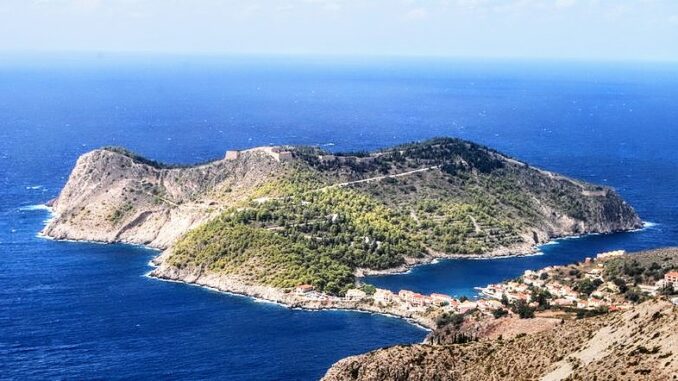
John Capes was a member of the British upper class: he was college educated, his father was a diplomat, his family had position in British society. A man of his breeding would normally have been offered a commission as an officer. Instead, for reasons that aren’t clear, he enlisted and became Leading Stoker (the naval equivalent of a corporal) – an engine mechanic onboard a submarine.
On Malta, in early 1941, at the age of 30, he drove a car into a horse and cart and wound up in court for property damages. Before the case could be resolved, the Royal Navy needed him back on his boat, the HMS Thrasher which was stationed in Alexandria, Egypt. Thus, court proceedings were postponed until September. Once the court case was settled, Capes caught a ride back to Alexandria aboard another submarine, HMS Perseus, departing Malta 26 November 1941.
Perseus was on a patrol, and did not return directly to base in Egypt, but ran east along the southern Italian coast towards Albania and then southward along the coast of Greece. It’s believed that she sank an Italian merchant ship in early December. Not being a regular member of the crew, Capes had to bunk in an empty aft torpedo tube. On the evening 6 December 1941, he was in his bunk with a bottle of rum, drunk. Perseus was running on the surface, recharging her batteries. At 10pm, near the Ionian island of Kefalonia, the sub struck a mine. The blast cracked open the hull somewhere forward, and the boat immediately began to sink, bow first until the sub was nearly vertical, nose down, stern up. Capes managed to get out of his bunk without injury. Power and lights went out. The stern slipped underwater, and the boat settled horizontally on the sea bottom, in an upright position. Capes found a flashlight and moved forward from the aft torpedo room to the engine room. There was damage, debris, and dead sailors scattered about. The bulkhead door was sealed closed, but the next compartment was already flooded and the high pressure was forcing water out around the edges into the engine room. Heading back aft, he found three injured men who he helped back to the torpedo room, and closed the watertight door behind them. The engine room was flooding quickly. Capes located four Davis Submerged Escape Apparatus vests with rebreathers. A depth guage in the room read 270 feet depth. The vests were designed to work at a maximum depth of 100 feet. It seemed suicidal, but there only chance to live was to get out through the escape hatch above their heads. They all knew they risked the bends. All four made it out through the escape hatch, but Capes never saw any of them again.
He barely made it to the surface himself. In agony from the bends, he could see land a few miles away and he forced himself to swim for it. Incredibly, he made it to the island of Kefalonia, where Greek villagers found him and kept him hidden from German and Italian troops for 18 months. Fishermen smuggled him out to Turkey, where he was able to get to the British consulate.
Capes was awarded the British Empire Medal, but he also faced skepticism. Many thought it was impossible to survive an escape from such a depth. He died in 1985, a controversial figure that many thought had faked his story. However, in 1997, Greek divers discovered the wreck of the Perseus with everything exactly the way Capes had described it. The depth guage that read 270 feet was broken, though, the sub lay at only 170 feet. So his miraculous escape wasn’t so far fetched.
In the end, Capes story was ultimately proven true. He has been vindicated.
